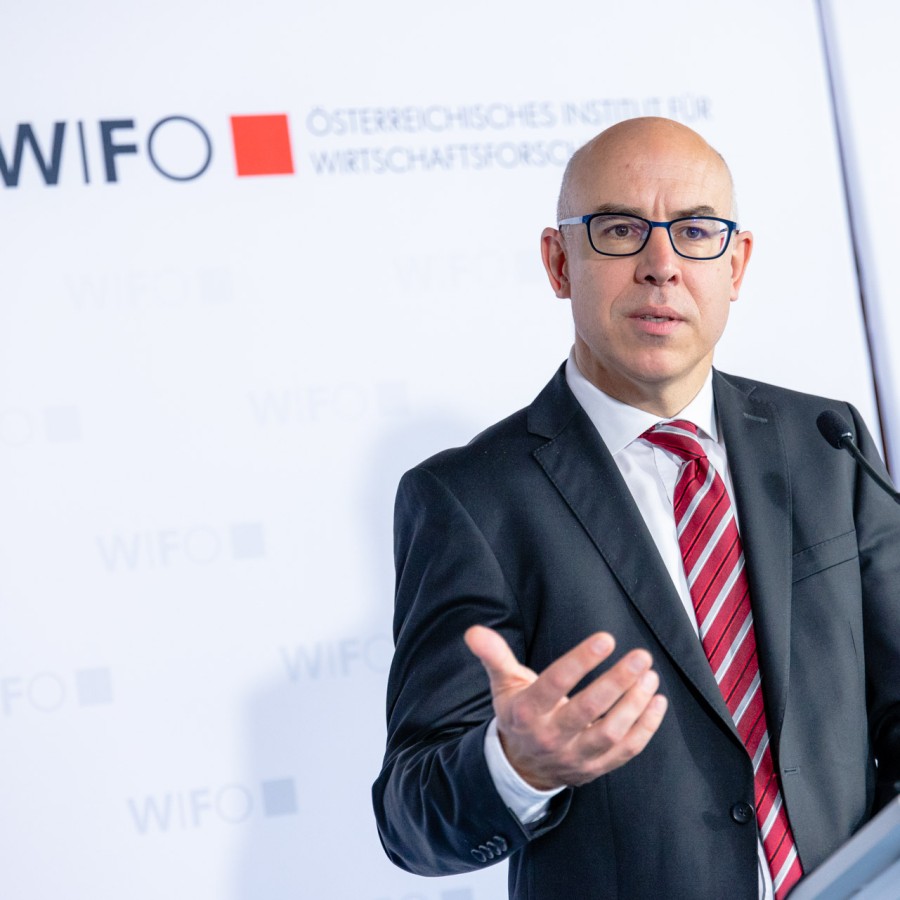"The upturn originally expected for the beginning of 2024 is being delayed. Surveys of domestic industrial companies showed a further deterioration in sentiment in February 2024", says Marcus Scheiblecker, one of the authors of the current WIFO Economic Outlook.
The high interest rates in the euro area are significantly dampening demand for capital goods. In the fourth quarter of 2023, investment in machinery and equipment as well as construction investment contracted (in real terms, compared to the previous quarter) in this economic area.
The economies of Germany and Austria, which are specialised in the production of machinery, are particularly suffering from this decline in demand. In both countries, where business sentiment is currently gloomy, economic growth in 2024 will again be weaker than the euro area average. For Austria, WIFO expects growth of just 0.2 percent.
The inflation rate in the euro area fell much faster and from a higher level than in the USA, reaching 2.8 percent in January and falling further to 2.6 percent in February, approaching rapidly the ECB's 2 percent target. This, as well as the weak business cycle, should allow the ECB to start easing monetary policy from mid-2024. Germany and Austria, in particular, should benefit from the subsequent revival in investment demand. As the economic situation improves, Austria's GDP should expand from mid-2024 and grow by 1.8 percent in 2025.
Inflation in Austria is expected to slow down further. After 7.8 percent in the previous year, it will fall to 3.8 percent this year and drop to 2.7 percent in 2025.
The labour market is reacting to the economic downturn with a delay. After the number of persons in active dependent employment rose by 1.2 percent in 2023 despite the recession, an increase of only 0.4 percent is expected in 2024. Based on the forecasted economic recovery, employment will post a stronger increase in 2025 (+1.1 percent). In turn, the unemployment rate should fall to 6.5 percent after a temporary increase to 6.7 percent in 2024 (2023: 6.4 percent; according to the national calculation method).
The weak business cycle, particularly in the energy-intensive industry, and the warmer-than-average February are contributing
to a larger reduction in greenhouse gas emissions than calculated in the last WIFO Economic Outlook. A decrease of 2.5 percent
is expected for 2024. In this forecast, WIFO predicts for the first time key figures on income distribution (see box "Beyond
GDP: Indikatoren zur Einkommensverteilung", in WIFO-Konjunkturprognose 1/2024) and expects a slight increase in the relative risk of poverty from 2023 onwards, while distribution inequality will tend
to decrease.


